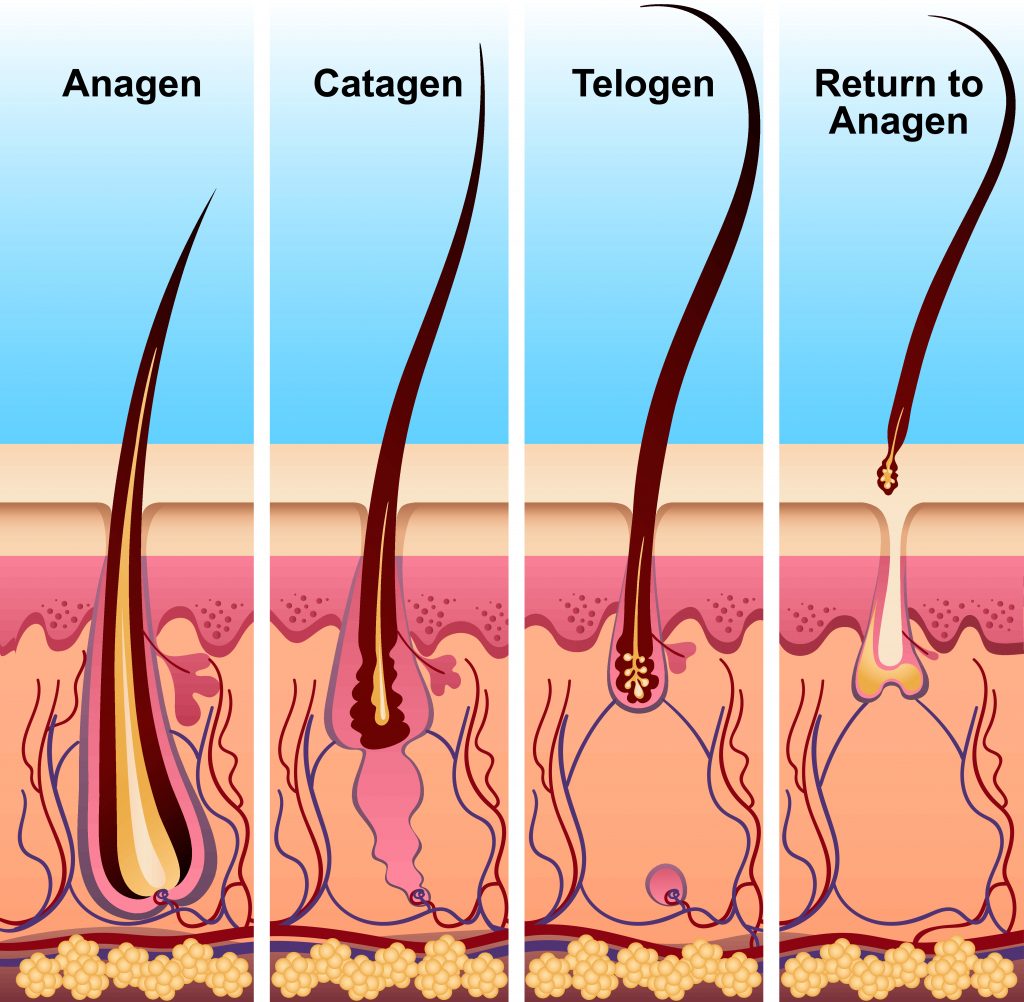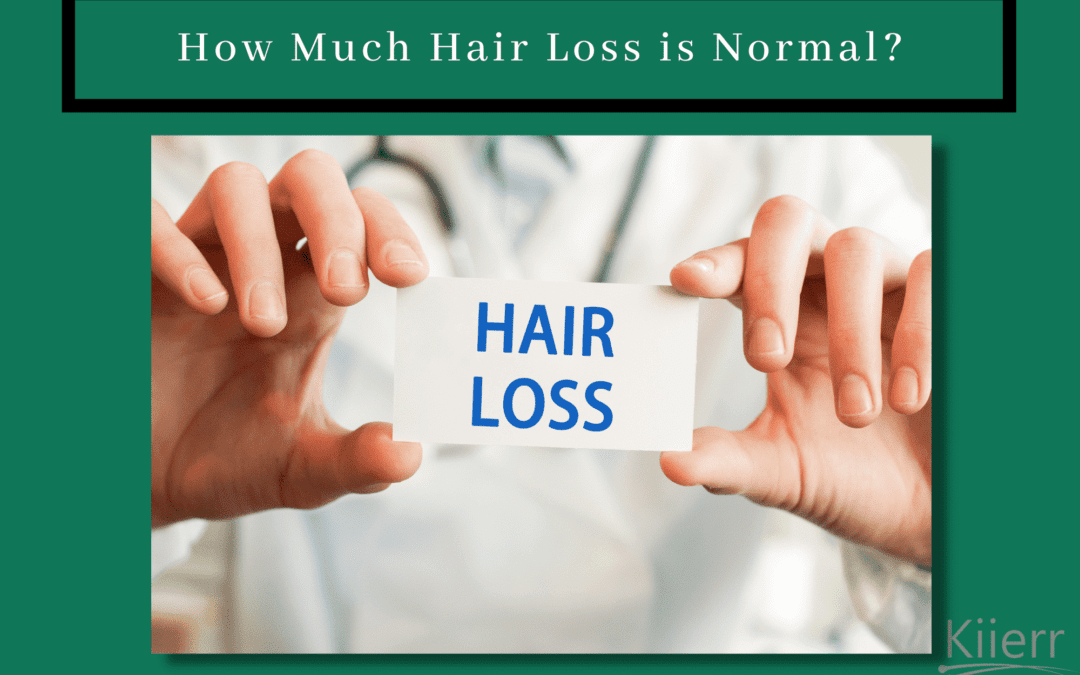Table Of Content

Most people see hair regrowth around three months after its trigger. It’s important to talk to your healthcare provider before starting any form of treatment for hair loss. Some types of treatment aren’t safe to use if you’re pregnant, planning on becoming pregnant or going through menopause. Many people think that hair loss only affects people assigned male at birth (AMAB).
How many hairs are on a human head?
It is important to know when the normal hair fall has crossed the natural limit and needs to be taken seriously. If you observe more than 150 strands of hair falling every day, you can consider it abnormal hair loss or hair shedding. The type and severity of hair loss you experience may determine the outcome (prognosis). Some types of hair loss are permanent, especially if you have damage to your hair follicles. For example, anagen and telogen shedding may stop with time.
What is the prognosis for hair loss in women?
Seeking medical attention in such cases can help identify any underlying causes or medical conditions contributing to hair loss and ensure timely intervention. See your doctor if you are distressed by persistent hair loss in you or your child and want to pursue treatment. For women who are experiencing a receding hairline (frontal fibrosing alopecia), talk with your doctor about early treatment to avoid significant permanent baldness. Anyone who is losing more than about 100 hairs a day or noticing large clumps of hair falling out could be experiencing excessive hair shedding.
Avoid harsh products

This usually isn't noticeable because new hair is growing in at the same time. Hair loss occurs when new hair doesn't replace the hair that has fallen out. However, brushing the hair generally just removes and collects the hairs that have already fallen from their follicles that day. Although this can be unsettling to see all at once in the hairbrush, it is normal in small amounts.
Hair grows and dies in phases, and nutrition, stress, hygiene, and daily styling all play a role in how much hair you lose daily. Take Traya's FREE 2-minute hair test, designed by doctors that analyses 20+ factors like genetics, scalp health, lifestyle, and hormones, to identify the root causes of your hair fall. Polycystic ovary syndrome (PCOS), thyroid disease and certain autoimmune conditions, such as alopecia areata and lupus, can all cause hair loss.
Also, be careful about giving supplements to a child, unless recommended by their healthcare provider. Dermatologists recommend the following treatments and lifestyle changes to help treat and prevent hair loss. If you have hair loss due to stress or hormone changes like pregnancy, you may not need treatment.
Hair loss treatments and prevention

Minoxidil may irritate your scalp and cause dryness, scaling, itching and/or redness. Hair grows on almost all of your skin surfaces — not the palms of your hands, soles of your feet, lips or eyelids. They may also order blood tests to check for any nutrient deficiencies or signs of an underlying condition.
The less you shampoo, the more hair you're going to see shed when you do, says Kingsley, who explains that 75 to 80% of the hair you lose during the day comes away when you shower. Ultimately, tracking a pattern of hair loss that deviates from your baseline, as opposed to monitoring a numerical amount, is a better indicator of a problem, notes Dr. McMichael. The next place we notice hair shedding is in the shower, post-shampoo.
It’s best to see a healthcare professional for any unexplained hair loss so they can determine the underlying cause and best course of treatment. If your hair loss is caused by an underlying disease, treatment for that disease will be necessary. If a certain medication is causing the hair loss, your doctor may advise you to stop using it for a few months. The telogen phase is a resting phase that lasts for about three months. During this phase, the hair follicle remains inactive, and the hair strand does not grow. Towards the end of the telogen phase, new hair begins to grow in the same follicle, pushing out the old hair.
Find out how much hair is normal to lose in a day, plus what may be causing you to shed more strands than usual. Excessive hair shedding can become long-term if you continue to experience high levels of stress for an extended period. This article looks at what happens when hair falls out excessively, why this can occur, and where to seek treatment. When the hair loss is caused by illness, treating the underlying cause allows hair to grow back.
For instance, new mothers may observe this shedding approximately two months after giving birth, with the peak occurring around four months postpartum. Most healthy people have between 80,000 and 120,000 hairs on their head. The authors of a 2017 study note that up to 9% of the hair follicles are in the resting stage at any given time, which means that they are ready for the strand to fall out.
12 Best Shampoos For Hair Thinning And Loss, Per Dermatologists And Editors - Women's Health
12 Best Shampoos For Hair Thinning And Loss, Per Dermatologists And Editors.
Posted: Tue, 23 Apr 2024 07:00:00 GMT [source]
Here, Anabel Kingsley, brand president and consultant trichologist at Philip Kingsley, sheds light on how much hair loss is normal. Physical, mental, or emotional stress, along with certain medications, can cause larger-than-normal amounts of hair follicles to push into the resting phase of the hair cycle. When this occurs, as much as 70% of scalp hair can fall out, often in handfuls, around two months after the trigger.
Ultimately, how much you see in your brush is dependent on your daily habits. The average number of strands that you should expect to lose each day depends on how thick and long your hair is, says Dr. McMichael. But if you're looking for a range, she says it is generally normal to lose anywhere between 50 to 100 hairs per day.
Hair loss, known clinically as alopecia, thins hair in some, changes the hairline in others, and can lead to partial or total baldness. It's typical to lose some hair every day as part of your hair’s usual growth cycle. For most people, the lost hair grows back, and you maintain a full head of hair. But illness, hormonal changes, stress, aging and inherited conditions can interfere with your hair’s growth cycle. More hair falls out, but new strands don’t always grow back.
Discontinuing medications or radiation therapy and chemotherapy can also reverse balding. In other cases, medications and dermatological therapies can help. Dietary supplements are products intended to supplement the diet. They are not medicines and are not intended to treat, diagnose, mitigate, prevent, or cure diseases. Be cautious about taking dietary supplements if you are pregnant or nursing.
If you can count more than strands, it is abnormal hair fall. Depending on your hair’s natural texture, you may be able to see a bit of your scalp all of the time, so simply being able to see your scalp is not cause for alarm. However, if you feel like you’re seeing more of it, that’s something to pay attention to.

No comments:
Post a Comment